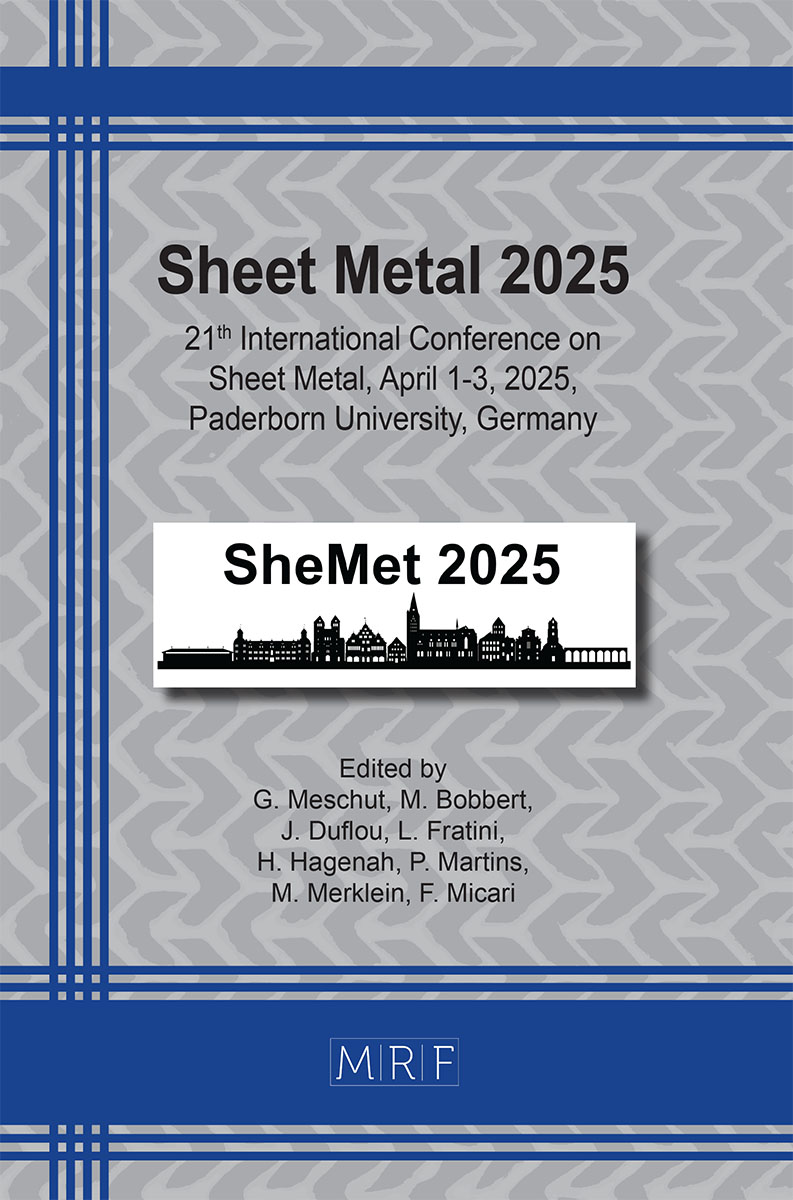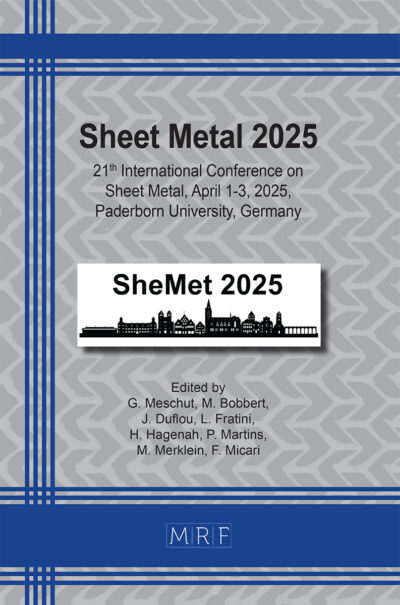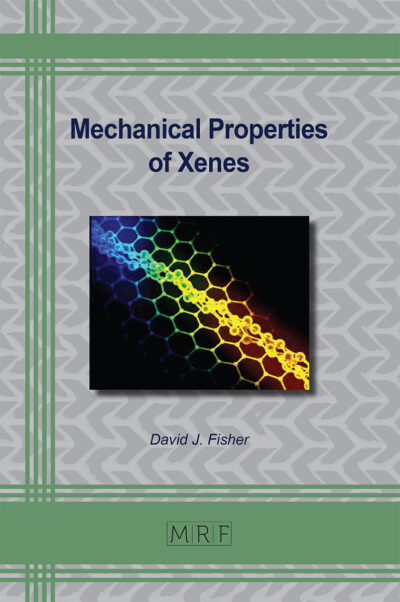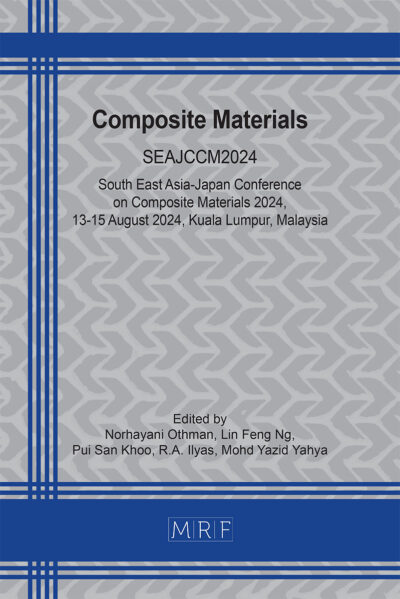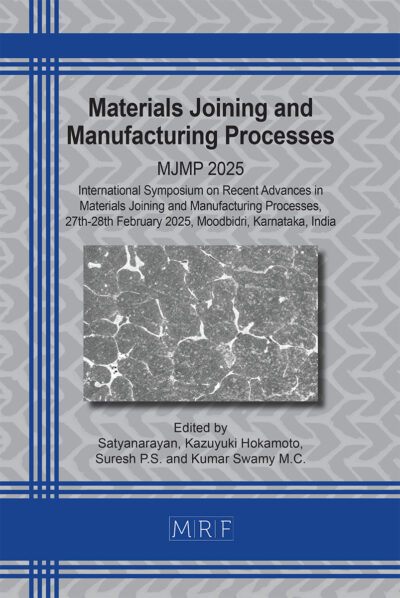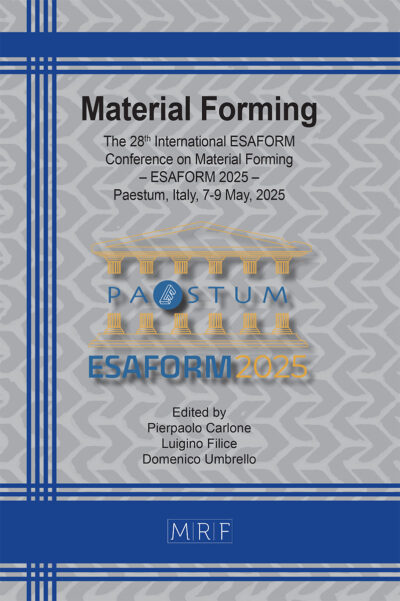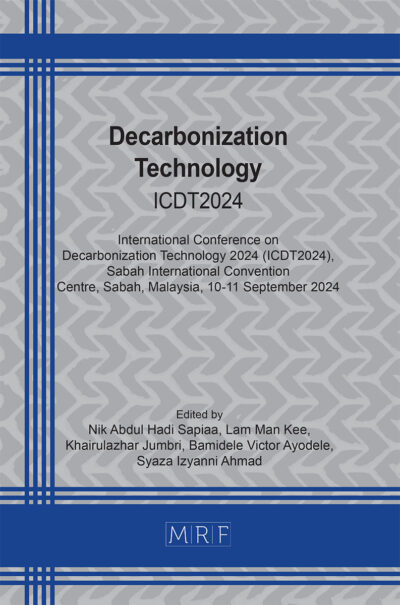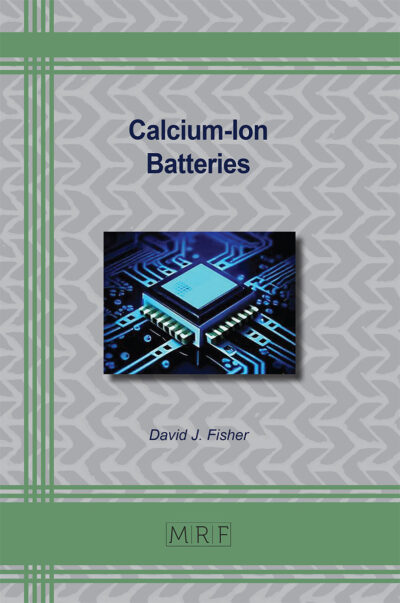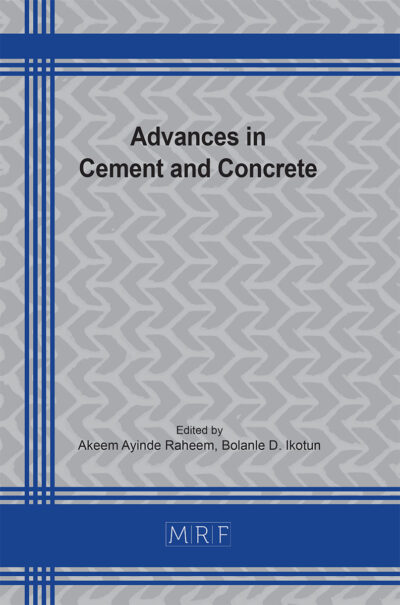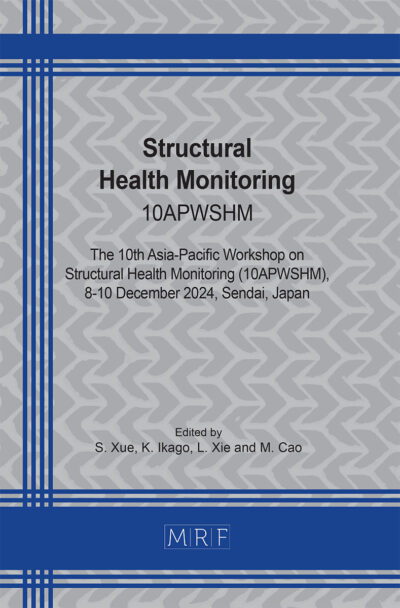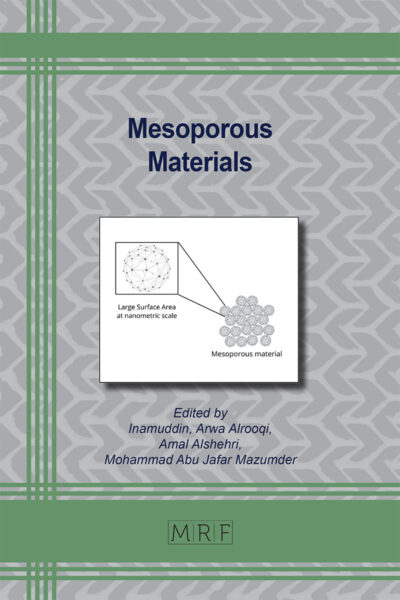Cross-process damage modeling: A process-chain case study of clinching and self-pierced riveting for aluminum connections
Özcan Harabati, Christian Roman Bielak, Max Böhnke, Malte Christian Schlichter, Marc Brockmeier, Mathias Bobbert, Gerson Meschut
Abstract. This study focuses on damage modeling across different mechanical joining processes within a process chain, specifically using clinching and self-pierce riveting (SPR). The aim is to apply a comprehensive model that captures the damage mechanisms and interactions in these technologies, optimizing them for enhanced performance and durability of aluminum joints. A GISSMO damage model was utilized, based on the stress states occurring during the joining process and a newly introduced damage testing method. This model was applied to both clinching and SPR processes. A detailed analysis of the stress states provided insights into their effect on the material. By incorporating these insights into the GISSMO model, improved accuracy in damage prediction was achieved. The model’s application to clinching and SPR demonstrated its effectiveness in optimizing aluminum joint performance and durability, ensuring that the processes can be finely tuned to minimize damage and enhance joint quality.
Keywords
Mechanical Joining, Damage Model, FE-Simulation
Published online 4/1/2025, 9 pages
Copyright © 2025 by the author(s)
Published under license by Materials Research Forum LLC., Millersville PA, USA
Citation: Özcan Harabati, Christian Roman Bielak, Max Böhnke, Malte Christian Schlichter, Marc Brockmeier, Mathias Bobbert, Gerson Meschut, Cross-process damage modeling: A process-chain case study of clinching and self-pierced riveting for aluminum connections, Materials Research Proceedings, Vol. 52, pp 150-158, 2025
DOI: https://doi.org/10.21741/9781644903551-19
The article was published as article 19 of the book Sheet Metal 2025
![]() Content from this work may be used under the terms of the Creative Commons Attribution 3.0 license. Any further distribution of this work must maintain attribution to the author(s) and the title of the work, journal citation and DOI.
Content from this work may be used under the terms of the Creative Commons Attribution 3.0 license. Any further distribution of this work must maintain attribution to the author(s) and the title of the work, journal citation and DOI.
References
[1] Deutscher Verband für Schweißen; Europäische Forschungsgesellschaft Blechverarbeitung: Taschenbuch DVS Merkblätter und-Richtlinien (2009)
[2] M. Neuser, F. Kappe, M Busch, O. Grydin, M. Bobbert, M. Schaper, G. Meschut, T. Hausotte, Joining suitability of cast aluminium for self-piercing riveting (2021),. IOP Conf Ser.: Mater Sci Eng 1157:12005. https://doi.org/10.1088/1757-899X/1157/1/012005
[3] D. Antonelli, L. Settineri, FEM simulation of clinched joints behavior (2001), Transactions of the North American Manufacturing Research Institute of SME
[4] S. Coppieters, P. Lava, R. van Hecke, S. Cooreman, H. Sol, P. van Houtte, D. Debruyne, Numerical and experimental study of the multi-axial quasi-static strength of clinched connections (2013). Int J Mater Form 6:437-451. https://doi.org/10.1007/s12289-012-1097-4
[5] C. R. Bielak, M. Böhnke, R. Beck, M. Bobbert, G. Meschut, Numerical analysis of the robustness of clinching process considering the pre-forming of the parts (2021). Journal of Advanced Joining Processes 3:100038. https://doi.org/10.1016/j.jajp.2020.100038
[6] C. R. Bielak, M. Böhnke, M. Bobbert, G. Meschut, Further development of a numerical method for analyzing the load capacity of clinched joints in versatile process chains (2021). 24th International Conference on Material Forming (ESAFORM 2021) https://doi.org/10.25518/esaform21.4298
[7] C. R. Bielak, M. Böhnke, J. Friedlein, M. Bobbert, J. Mergheim, P. Seinmann, G. Meschut, Numerical analysis of failure modeling in clinching process chain simulation (2023). Materials Research Proceedings Series, v. 25. Materials Research Forum LLC, Millersville https://doi.org/10.21741/9781644902417-33
[8] J. Eckstein, Numerische und experimentelle Erweiterung der Verfahrensgrenzen beim Halbhohlstanznieten hochfester Bleche (2009), Institut für Materialprüfung, Werkstoffkunde und Festigkeitslehre (IMWF) Universität Stuttgart und Materialprüfungsanstalt (MPA) Universität Stuttgart
[9] P. O. Bouchard, T. Laurent, L. Tollier, Numerical modeling of self-pierce riveting-From riveting process modeling down to structural analysis (2008). Journal of Materials Processing Technology 202:290-300. https://doi.org/10.1016/j.jmatprotec.2007.08.077
[10] F. Kappe, C. Zirngibl, B. Schleich, M. Bobbert, S. Wartzack, G. Meschut, Determining the influence of different process parameters on the versatile self-piercing riveting process using numerical methods (2022). Journal of Manufacturing Processes 84:1438-1448. https://doi.org/10.1016/j.jmapro.2022.11.019
[11] A. Rusia, M. Beck, S. Weihe, Simulation of self-piercing riveting process and joint failure with focus on material damage and failure modelling (2019). 12th European LS-DYNA Conference , Koblenz, Germany
[12] A. Rusia, S. Weihe, Development of an end-to-end simulation process chain for prediction of self-piercing riveting joint geometry and strength (2020). Journal of Manufacturing Processes 57:519-532. https://doi.org/10.1016/j.jmapro.2020.07.004
[13] Z. Du, B. Wei, Z. He, A. Cheng, L. Duan, G. Zhang, Experimental and numerical investigations of aluminium-steel self-piercing riveted joints under quasi-static and dynamic loadings (2021). Thin-Walled Structures 169:108277. https://doi.org/10.1016/j.tws.2021.108277
[14] M. Otroshi, M. Rossel, G. Meschut, Stress state dependent damage modeling of self-pierce riveting process simulation using GISSMO damage model (2020). Journal of Advanced Joining Processes 1:100015. https://doi.org/10.1016/j.jajp.2020.100015
[15] G. Meschut, M. Rossel, M. Otroshie, C. R. Bielak, Methodenentwicklung zur Verbesserung der Schädigungsmodellierung in der numerischen 3D-Belastungssimulation mechanischer Fügeverfahren unter Berücksichtigung der fügeinduzierten Vorbeanspruchung (2023), 1. Auflage. EFB-Forschungsbericht, vol 610. Europäische Forschungsgesellschaft für Blechverarbeitung e.V. (EFB), Hannover
[16] P. Heyser, R. Petker, G. Meschut, Development of a numerical simulation model for self-piercing riveting of additive manufactured AlSi10Mg (2023). Proceedings of the Institution of Mechanical Engineers, Part L: Journal of Materials: Design and Applications. https://doi.org/10.1177/14644207231158213
[17] M. Böhnke, F. Kappe, M. Bobbert, G. Meschut, Influence of various procedures for the determination of flow curves on the predictive accuracy of numerical simulations for mechanical joining processes (2021). Materials Testing 63:493-500 https://doi.org/10.1515/mt-2020-0082
[18] F. Kappe, C.R. Bielak, V. Sartison, M. Bobbert, G. Meschut F. Kappe, C. R. Bielak, V. Sartison, M. Bobbert, G. Meschut, Influence of rivet length on joint formation on self-piercing riveting process considering further process parameters (2021). ESAFORM 2021 https://doi.org/10.25518/esaform21.4277
[19] M. Böhnke, C. R. Bielak, J. Friedlein, M. Bobbert, J. Mergheim, G. Meschut, P. Steinmann, A calibration method for failure modeling in clinching process simulations (2023). Materials Research Proceedings Series, v. 25. Materials Research Forum LLC, Millersville https://doi.org/10.21741/9781644902417-34
[20] ANSYS (2024) LS-DYNA® Keyword User’s Manual Volume I
[21] ANSYS (2024) LS-DYNA® Keyword User’s Manual Volume II- Material Models

